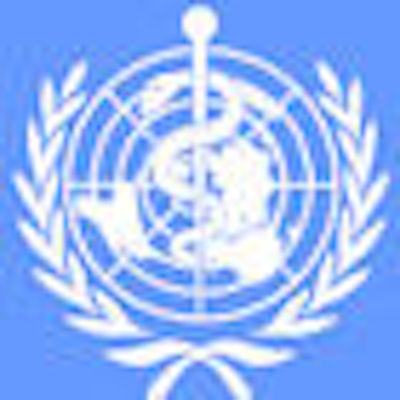
Concerned about mercury pollution, the World Health Organization (WHO) last week convened a meeting of experts to discuss possible new guidelines for the global use of dental amalgams.
Antiamalgam activists seized on comments made at the November 16-17 meeting as evidence that the organization, sponsored by the United Nations, will push for an eventual ban on dental amalgam.
"An agreement in concept was reached yesterday by a World Health Organization-convened international expert group, supporting the 'phase down' of dental mercury use worldwide," the Mercury Policy Project said in a press release issued November 18.
—Michael Bender, director, Mercury Policy Project
"We're going to change the face of dental care," said the organization's director, Michael Bender, who attended the meeting, in an interview with DrBicuspid.com.
But others who were present had a different interpretation. "No final decisions were made," said Ramon J. Baez, D.D.S., M.P.H., a WHO consultant and part-time professor at the University of Texas, San Antonio. "There were comments that amalgam should be phased out, but there were other comments made asking what the alternatives are, and would they work not just in the United States but in the rest of the world."
The group has not yet produced any official report. "The WHO meeting evaluated the evidence on materials used in dental restoration and their relevance for dental care of populations in high-, middle-, and low-income countries," said Poul Erik Petersen, D.D.S., Dr. Odont. Sci., M.Sc., the WHO officer responsible for oral health, in an e-mail. "Apparently, Michael Bender has some personal views in relation to the issue which do not reflect the meeting. WHO cannot confirm any statement."
Dr. Baez said the meeting is part of the WHO's ongoing evaluation of risks posed by various toxic substances. On February 20, 2009, the UN announced negotiations among more than 140 countries aimed at a treaty to reduce the threat from mercury in the environment.
Not the first time
The WHO has raised concerns about dental amalgam since at least 1991, when it "confirmed that mercury contained in dental amalgam is the greatest source of mercury vapour in nonindustrialized settings, exposing the concerned population to mercury levels significantly exceeding those set for food and air."
Mercury vapor in the atmosphere is deposited in lake-bottom sediments where it is transformed into a more toxic form, methyl mercury, and taken up in the flesh of fish, WHO said.
The organization cited a U.K. report that found 7.4 tons of mercury from dental amalgam discharged into "the sewer, atmosphere or land," and another 11.5 tons sent for recycling or "disposed with the clinical waste stream."
In a DrBicuspid.com interview earlier this year, ADA spokesman Rod Mackert, D.M.D., Ph.D., a professor of dental materials at the Medical College of Georgia School of Dentistry, said dental amalgam makes only a modest contribution to mercury pollution in the U.S.
While U.S. dental offices are the third largest users of mercury, consuming around 30 million tons of amalgam per year, of the 125 tons of mercury released into the air annually, the total amount coming from dental offices is about one ton, according to Dr. Mackert. And of the eight tons released into water, dental offices account for only three-tenths of a ton.
In addition, the ADA last year began recommending the use of amalgam separators in dental offices to further reduce emissions.
But Bender said that only about 20% of dental offices in the U.S. use the separators and they're too expensive for developing countries. In addition, they don't capture the mercury released from crematoriums, he noted.
New alternatives needed
He and Dr. Baez agreed that much of the conversation at last week's meeting focused on alternatives to amalgam. Composite resins are too expensive for many developing countries, said Bender. Glass ionomers don't last as long. "It's time to develop dental materials that are reasonably priced so that everyone can have access to dental care," he said. "Right now there is not a dental restoration material that meets all the criteria. They're going to be challenging manufacturers."
He is urging antiamalgam activists to focus on environmental risks of mercury rather than claims of health risks posed directly to people who have amalgam fillings. "It's going to get us quicker where we need to go than knocking heads with dentists," he said.
Charles Brown, national counsel for Consumers for Dental Choice, which has sued the FDA in effort to achieve a U.S. ban on amalgam, made a round of phone calls to media organizations last week to alert them to the WHO meeting. "Obviously we're delighted with the way things are going," he said.
Copyright © 2009 DrBicuspid.com



















